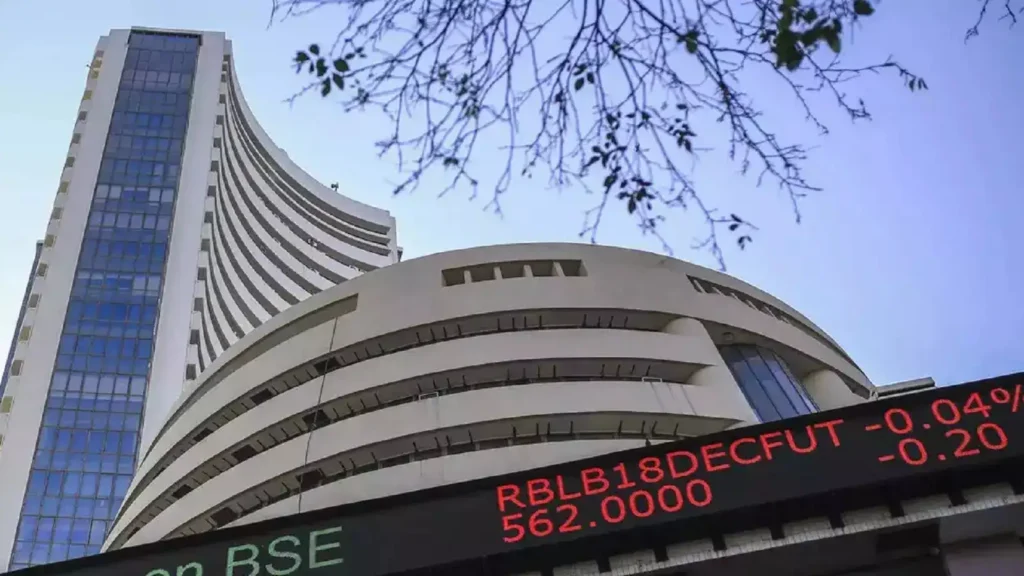
The Bombay Stock Exchange (BSE) recently announced a landmark reshuffle in its benchmark index, the Sensex, leading to the exclusion of IndusInd Bank and Nestle India. These two well-established entities, integral to their respective sectors, have been replaced as part of the semi-annual review conducted by the index committee. This decision has sparked discussions across financial markets, among analysts, and within the broader investor community.
The changes in the Sensex lineup are not just a reflection of market dynamics but also a strategic move aimed at maintaining the relevance and vibrancy of the index as a barometer of the Indian economy. In this blog, we delve deeper into the reasons behind this reshuffle, its implications for the companies involved, and its broader impact on the Indian stock market.
The Legacy of the Sensex
The Sensex, often regarded as the pulse of the Indian stock market, comprises 30 of the most influential and liquid companies listed on the Bombay Stock Exchange. Since its inception in 1986, the index has evolved to represent the core of India’s economic and industrial landscape. Over the years, it has become a critical indicator for investors, both domestic and international, who rely on it to gauge market trends and the overall health of the Indian economy.
Periodic reviews and adjustments in its composition ensure that the Sensex remains a dynamic and accurate reflection of market realities. These changes are not taken lightly; they are based on rigorous criteria aimed at maintaining the index’s credibility and relevance.
Understanding the Criteria for Sensex Inclusion
The selection process for Sensex constituents involves a combination of quantitative and qualitative parameters, ensuring only the most robust companies make it to the index. The following criteria play a pivotal role:
- Market Capitalization:
Companies with the highest market capitalization are given priority, as they represent a significant portion of the market’s total valuation. - Liquidity:
High trading volumes and liquidity are essential to ensure that stocks in the Sensex can be easily bought or sold without significant price fluctuations. - Sectoral Representation:
The Sensex aims to represent a broad spectrum of industries, reflecting the diversity of the Indian economy. - Financial Performance and Growth Potential:
Companies with consistent financial performance and future growth prospects are more likely to be included.
The exclusion of IndusInd Bank and Nestle India, while surprising to many, aligns with the index committee’s objective of recalibrating the Sensex to better reflect the evolving market dynamics.
Why IndusInd Bank and Nestle India Were Removed
IndusInd Bank’s Journey in the Sensex
IndusInd Bank has been a key player in India’s banking sector, known for its innovative services and strong retail banking presence. However, recent years have seen heightened competition in the banking sector, coupled with challenges such as asset quality concerns and regulatory pressures.
While the bank remains a prominent name in the industry, its performance relative to newer entrants in the market might have influenced the committee’s decision. Liquidity, market capitalization, and a need to diversify the financial sector representation within the Sensex may have played a role in its exclusion.
Nestle India: A FMCG Giant Steps Aside
Nestle India, synonymous with household brands like Maggi and Nescafé, has been a stalwart in the FMCG sector. Its exclusion from the Sensex, however, does not reflect a decline in its market performance. Instead, it signifies a shift towards incorporating companies that better align with the current market trends and investor preferences.
Analysts speculate that sectoral rebalancing and a focus on including companies from emerging industries, such as technology and renewable energy, could be behind Nestle India’s exit.
Implications for the Companies Excluded
Short-Term Market Reactions
For both IndusInd Bank and Nestle India, their exclusion from the Sensex could lead to immediate market reactions. Historically, stocks removed from major indices experience short-term downward pressure on their prices due to reduced inflows from passive investment funds and exchange-traded funds (ETFs) that track the index.
However, long-term performance is often determined by a company’s operational strength, innovation, and adaptability. Both IndusInd Bank and Nestle India possess strong fundamentals, which are expected to mitigate any adverse effects of this exclusion over time.
Long-Term Outlook
For IndusInd Bank, this change could serve as an opportunity to reassess its strategies and strengthen its market position. Focusing on digital banking initiatives, expanding its retail footprint, and improving asset quality could help the bank regain its prominence.
Nestle India, on the other hand, remains a leader in the FMCG space. Its consistent focus on product innovation, sustainability, and consumer engagement ensures that it continues to be a favorite among investors and consumers alike.
The Impact on the Sensex
Strengthening the Index
The inclusion of new companies in the Sensex lineup is expected to bring a fresh dynamic to the index. These changes are not just about replacing companies but about enhancing the index’s ability to represent the broader market and attract a diverse range of investors.
Sectoral Rebalancing
By excluding companies like IndusInd Bank and Nestle India, the index committee has opened the door for sectors that are gaining prominence in India’s economic landscape. Emerging industries such as technology, renewable energy, and pharmaceuticals are likely to see increased representation in the Sensex, reflecting the changing priorities of the Indian economy.
Attracting Global Investors
The Sensex serves as a benchmark for international investors looking to enter the Indian market. Its composition plays a crucial role in shaping their perception of India’s economic health and market potential. By aligning the index with current trends, the committee ensures its continued relevance on the global stage.
Market Sentiment and Investor Reactions
A Mixed Bag of Emotions
The reshuffling of the Sensex has elicited varied reactions from the investor community. While some view it as a necessary step to keep the index relevant, others express concerns over the immediate impact on the excluded companies.
For retail investors, this development underscores the importance of focusing on a company’s fundamentals rather than relying solely on its index inclusion status. Institutional investors, on the other hand, may need to realign their portfolios to reflect the new Sensex composition.
A Broader Perspective
Reflecting Economic Evolution
The changes in the Sensex lineup highlight the dynamic nature of India’s economy. As newer industries and companies rise to prominence, the composition of benchmark indices must evolve to reflect these shifts.
Lessons for Companies
For companies, inclusion or exclusion from the Sensex serves as a powerful reminder of the need to adapt, innovate, and consistently deliver value to shareholders. The Indian market is increasingly competitive, and only those who align with evolving trends can maintain their position in benchmark indices.
For Investors
For investors, this reshuffle is an opportunity to reassess their portfolios and explore new growth opportunities. While index inclusion remains an important consideration, a focus on the underlying fundamentals and growth potential of individual stocks is essential for long-term success.
Conclusion: A Changing Market Landscape
The exclusion of IndusInd Bank and Nestle India from the Sensex marks a significant milestone in the index’s journey. While these companies continue to be influential players in their respective industries, their removal underscores the dynamic and ever-changing nature of the stock market.
For the Sensex, this reshuffle represents an opportunity to stay relevant, competitive, and reflective of India’s economic aspirations. As the index continues to evolve, it remains a critical barometer for investors and a testament to the resilience and adaptability of the Indian economy.

